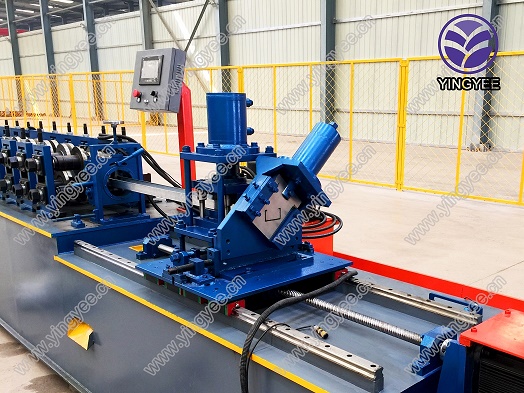
The Evolution and Importance of Light Keel Roll Forming Machines
In the world of modern manufacturing, efficiency and precision are paramount. As industries continue to strive for higher productivity while maintaining quality, the need for specialized machinery has never been more critical. One such innovation is the light keel roll forming machine. This advanced piece of equipment is essential for producing high-quality steel structures, particularly in the construction and manufacturing sectors.
What is a Light Keel Roll Forming Machine?
A light keel roll forming machine is designed to transform flat metal sheets into specific shapes through a continuous bending process. The primary function of this machine is to create light keels, which are essential components in various applications, including suspended ceilings, wall partitions, and structural supports. The design allows for a streamlined production process, making it possible to produce a consistent and high volume of keels with minimal waste.
Key Features and Benefits
1. Automation and Efficiency One of the standout features of modern light keel roll forming machines is their automation capability. This reduces the need for manual labor and enhances efficiency, allowing manufacturers to meet increasing demand without compromising quality. Operators can set parameters through a computer interface, which ensures precision in every production run.
2. Versatility These machines are not just limited to producing one type of keel. They can be adjusted to form different profiles as needed, thanks to interchangeable die sets. This versatility makes them ideal for manufacturers who need to respond quickly to market trends or client specifications.
3. Quality Control The roll forming process is known for its ability to produce parts with superior dimensional accuracy and surface finish. This consistency is crucial in construction applications where structural integrity is paramount. By choosing a reliable light keel roll forming machine manufacturer, companies can ensure that they are receiving equipment that meets rigorous quality standards.
4. Cost-Effectiveness Although the initial investment in a light keel roll forming machine may be substantial, the long-term savings are significant. The reduction in material waste and labor costs, coupled with the ability to produce parts faster, results in a high return on investment. Additionally, durable machines require less maintenance, further lowering operational costs over time.

Choosing the Right Factory
When selecting a light keel roll forming machine from a factory, several factors should be considered to ensure you make the best choice.
1. Reputation and Reliability Seek out manufacturers with a solid reputation in the industry. Reading customer reviews, looking at case studies, and requesting referrals can provide insight into the reliability of the equipment.
2. Customization Options Since different projects may have unique requirements, it is critical to choose a manufacturer that offers customization options. This flexibility enables businesses to adapt the machinery to their specific production needs.
3. After-Sales Support A good manufacturer should provide comprehensive after-sales support, including installation, maintenance, and training services. This support can significantly affect the machine's operational efficiency and lifespan.
4. Technological Advancements Opt for factories that continuously invest in research and development. The manufacturing landscape often shifts toward smarter, more efficient technologies, and aligning with innovative manufacturers can give businesses a competitive edge.
Conclusion
Light keel roll forming machines play a significant role in modern manufacturing, particularly in the construction industry. Their ability to produce high-quality, consistent products efficiently makes them an invaluable asset to businesses looking to enhance productivity. By selecting the right machine from a reputable factory, companies can ensure they are equipped to meet the demands of the present and adapt to the challenges of the future. As industries continue to evolve, the importance of these machines will only grow, shaping the landscape of manufacturing for years to come.